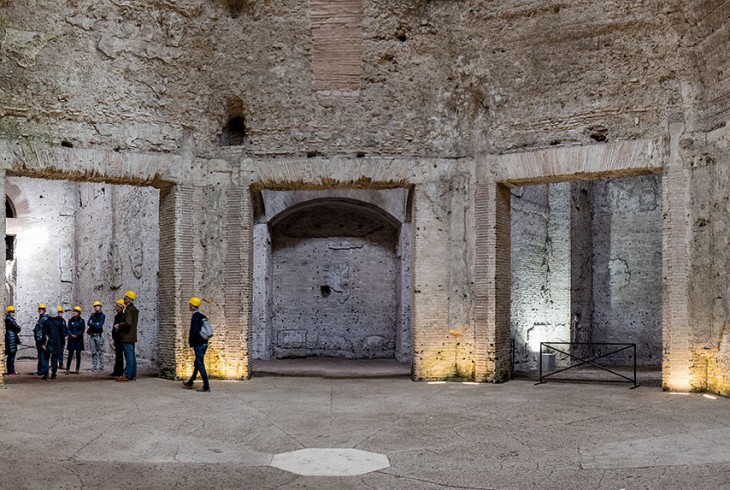Updated 25 February 2025
Have you ever visited the incredible remains of Nero’s Golden House in Rome? The mad, bad and egomaniacal Nero is one of history’s most notorious characters, his tyrannical reign the stuff of legend. But the emperor certainly knew how to live in style.
His vast palace - known in Latin as the Domus Aurea because its every surface glittered with gold – was ancient Rome’s most spectacular building, and scarcely believable highlights included a rotating dining room open to the starry night sky as well as a massive artificial lake.
Visiting the subterranean remains of the so-called Domus Aurea is one of the must-dos on a trip to Rome. Find out all about this spectacular monument to the emperor’s outsize ego with us!
The Rise of Nero
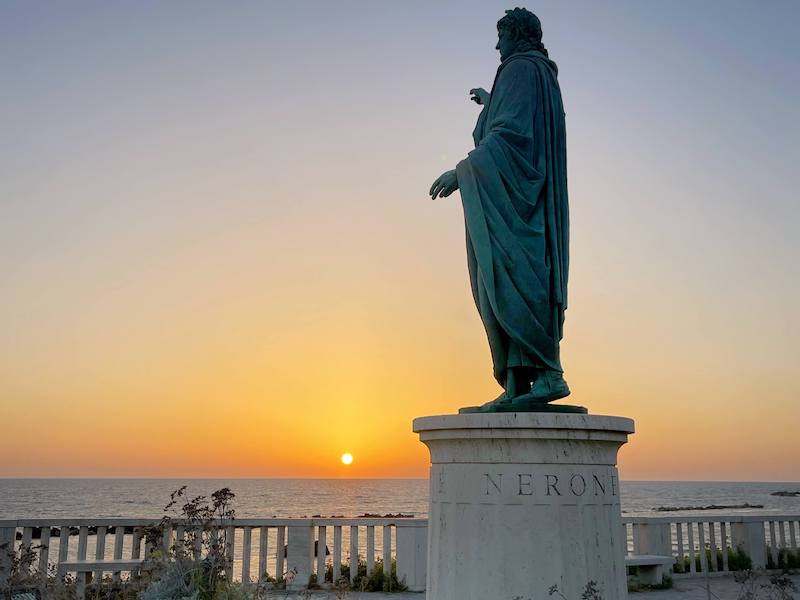
October 13th, 54 AD. The emperor Claudius has just died, assassinated by his own ambitious and ruthless wife Agrippina, who served him poisonous mushrooms for dinner. Nero, the 17 year old son of the apparently grieving widow, is proclaimed emperor, in spite of the existence of a legitimate heir to the throne - Claudius’ son Britannicus.
According to the Roman writer Suetonius, the life of the emperor Nero was nothing but a litany of horrors, from beginning to end: from the brutal assassination of his step brother Britannicus up to his suicide in 68 AD, Nero’s biography basically consists of a long list of horrible and bloody crimes.
Suetonius tells us of how Nero had his first wife Octavia killed, and then kicked his pregnant second wife, the beautiful Poppea, to death after a quarrel over his fondness for frequenting the races. Ancient sources also recount how Nero ordered his teacher Seneca to commit suicide, and even meticulously planned the assassination of his own mother Agrippina, who was stabbed in the womb after surviving various attempts on her life via poisoning and drowning.
But since compiling a list of all the crimes of which Nero is accused would take quite a while, let’s just focus on the outrage linked to our story of the Domus Aurea: the fire of Rome.
The Great Fire of Rome
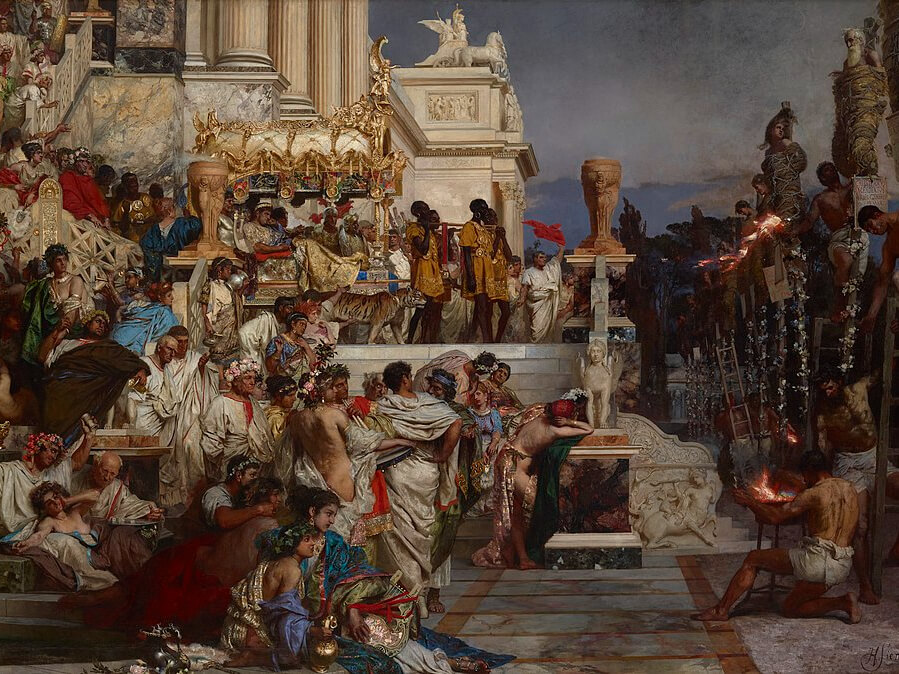
It’s the night of July 18th, 64 AD: a fire starts near the Circus Maximus and quickly spreads through the city, helped along by the wind and fed by the rickety wooden tenements of the Suburra, a claustrophobic and impoverished neighbourhood that was a byword for vice in the ancient metropolis.
Rome burns for nine interminable days: it's an unprecedented tragedy, and one which has no parallel in the history of Imperial Rome. Thousands of citizens perish in the smoke and flames, while hundreds of thousands more have their homes reduced to ashes. Out of the 14 regions of Rome, 10 are entirely burnt to the ground.
Although the causes of the fire have never been identified with certainty, most of the ancient historians blame Nero: as tradition has it, the emperor happily fiddled whilst he watched Rome burn.
But is that true? Well, we can discount the fiddling immediately - the fiddle was only invented in the 16th century, so Nero’s music-making must have involved a more ancient instrument, such as a cithara or lyre. But in reality, the emperor wasn’t even in Rome when the fire began, and was staying instead at his seaside villa in Anzio when he heard news of the conflagration.
But that doesn’t necessarily let Nero off the hook: according to ancient historians such as Suetonius and Tacitus, the fire might have been started by Nero’s men on his orders whilst the emperor himself kept a safe distance; the emperor's flunkeys were allegedly seen by witnesses hurling flaming torches into the streets.
Whatever the truth, rumours of Nero’s involvement spread quickly around Rome, and the emperor urgently needed to find a scapegoat to shift the blame. His cunning soon led him to the Christians, a mysterious and little understood new religious sect who seemed unwilling to fully integrate into Roman society.
Despite the fact that they had nothing to with it, hundreds of Christians paid with their lives for the fire of Rome. Many were tortured and killed during the public games held in Nero’s Circus on the Vatican hill, including St. Peter himself - a few centuries later the grand basilica that bears his name was built on this very spot. You can read more about the history of St. Peter’s here - Art and Faith in St. Peter's Basilica.
Entertainer or Villain?
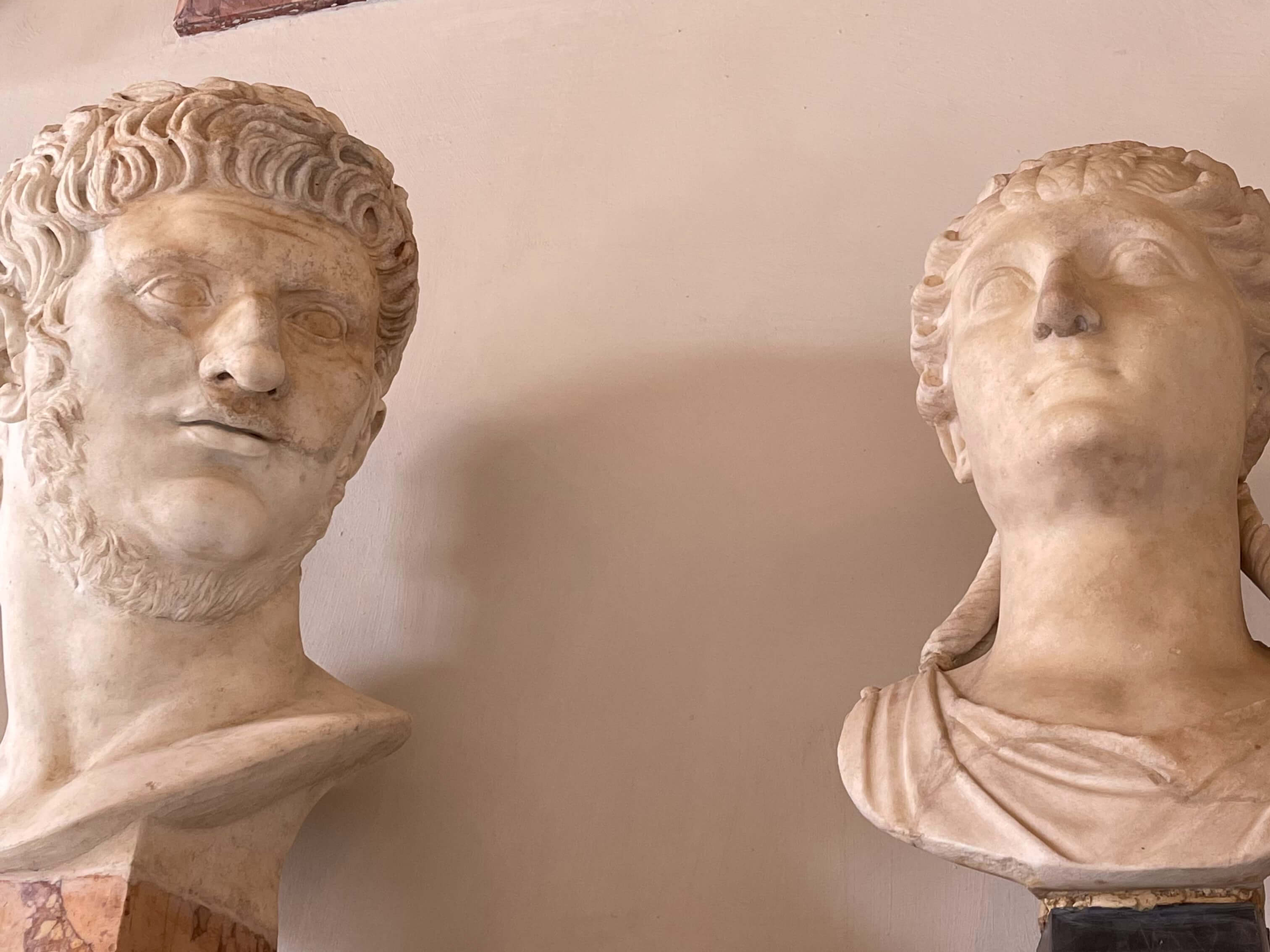
Fratricide, matricide, uxoricide, arson, religious persecution… The breathtaking extent of Nero’s crimes can be matched only by a list of his extravagances. Because, you see, the emperor was in fact far more interested in entertainment and the good life than he was in politics.
A keen musician, he enjoyed entertaining his dinner guests with music and songs of his own composition. He preferred the racetrack to the Senate house, and was even known to lace up his charioteer’s boots to take part in competitions himself - a grave breach of decorum for the figure of emperor.
According to the ancient writers, Nero’s disrespect for the rules of propriety went even further: Suetonius tells us that the emperor castrated one of his slaves, one Sporus, and married him as his empress during a tour of Greece after the murder of Poppea, to whom Sporus bore an uncanny likeness.
Even now, despite all the ink that has been spilt about Nero and his alleged depravities, it’s hard to tell how much truth is contained in the pages written by his contemporaries: as they were mostly senators, the historians of the period often harboured no little hostility towards the emperors, and were notorious for putting the boot in to vanquished rulers in order to curry favour with the latest regime. Whilst Nero was assuredly no choir boy, it’s likely that many of the stories that circulated about him were gross exaggerations or half truths.
Nero’s Golden House
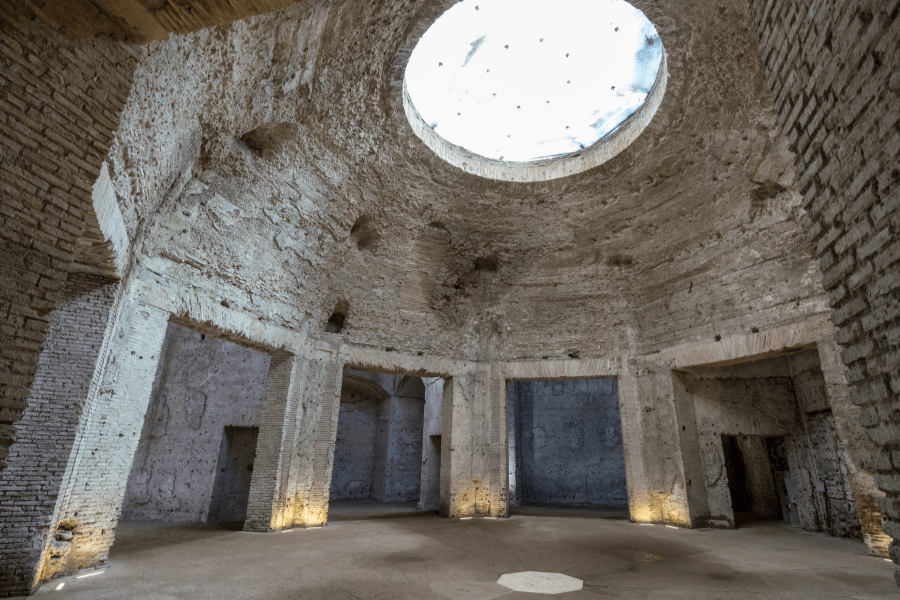
But whilst historiography cannot offer any reliable evidence about Nero’s personality, archaeology can: Nero’s Golden House. The amazing ruins of Nero’s residence offer the only truly water-tight clues that can shed some light on Nero’s character. Aptly named “Domus Aurea”, or the Golden House, this incredible residence was built on the land that had been conveniently “cleared” by the fire of 64 AD.
Stretching from the Palatine Hill to the Esquiline Hill, Nero’s House had some remarkable features that might sound impossible even for today’s advanced technology. Not only were the walls covered in marble and the ceilings decorated with golden mosaics, but, among its 300 rooms, the house featured a rotating dining room open to the starry night sky. Even now it’s not clear what kind of mechanism was used to rotate the room, but its existence is certain.
Suetonius tells us that 'the dining-rooms had fretted ceilings made of ivory, with panels that turned and shed flowers and perfumes on those below.' The house was also embellished with magnificent gardens studded with fountains and statues. One famous statue in particular can give us a good idea of the size of Nero’s ego: the Colossus, a 120 foot high bronze and gold statue ostensibly portraying the Sun God, but whose face bore the emperor’s unmistakeable likeness.
Close to the Colossus, the emperor ordered the construction of an artificial lake where he could watch water shows and possibly even naval battles, or just relax while looking at the water of his private pond.
Nero's Fall and the Rise of the Colosseum
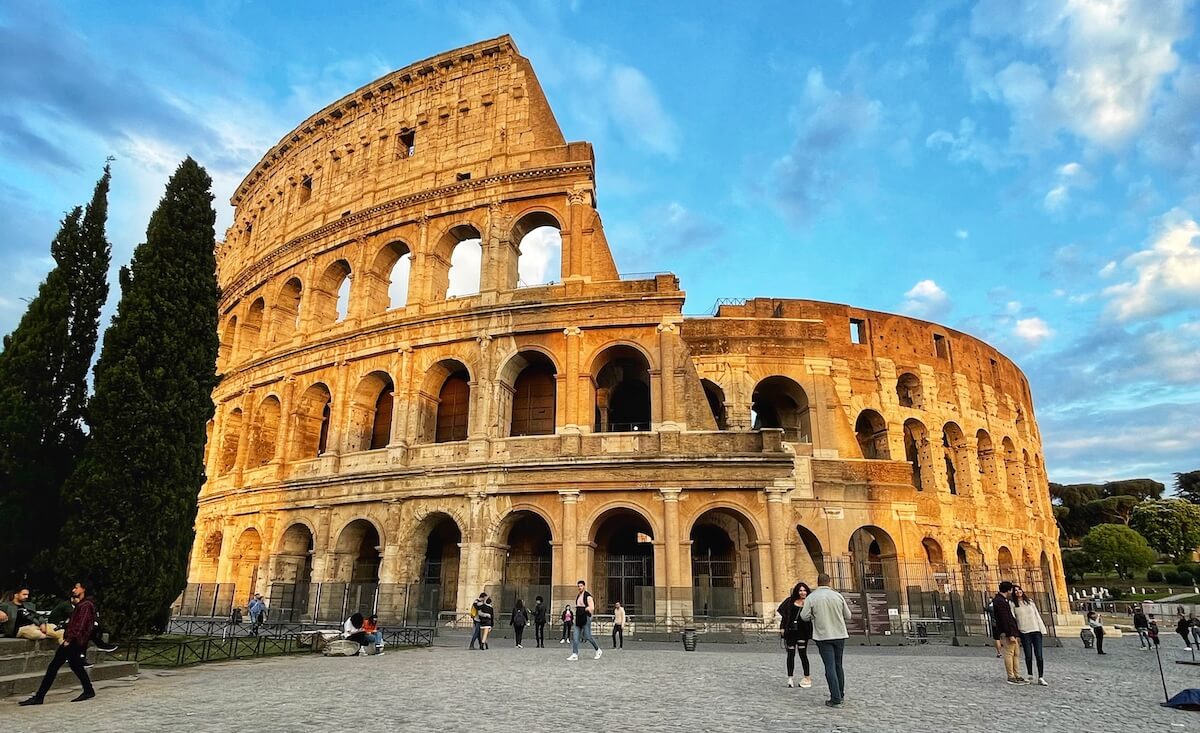
Nero didn’t get to enjoy his pleasure-palace for long. His increasingly unhinged behaviour was becoming too egregious even by the standards of Roman emperors and, amidst plummeting popularity ratings and whispers of insurrection, he committed suicide in 68 AD.
As founder of the new Flavian dynasty, his successor Vespasian sought to make a clean break from his hated predecessor. And so the palace was pulled down and its lake drained and filled in. On the site of the private lake that so vividly symbolised the contempt Nero held for the city’s populace, Vespasian erected a fundamentally public monument: an amphitheater where free entertainment would be held in the form of gladiator games, wild animal hunts and various other bloodsport. Yes, we're talking about the Colosseum.
Although a large part of Nero’s amazing residence was destroyed, 153 rooms still survive today and have recently reopened to the public after a meticulous restoration. Moreover, thanks to modern Virtual Reality and accurate 3D reconstructions, you can see with your own eyes (and goggles!) the treasures of this unbelievable 1900-year-old palace of wonders, just as it was at the time of Nero.
We hope you enjoyed learning about the fascinating history of Nero’s Golden House, a monument that captures the ambition, extravagance, and ultimate downfall of Rome’s most infamous emperor. You can visit the remains of the Domus Aurea yourself on a special guided tour: stepping inside its surviving halls still offers a glimpse into a world of unimaginable luxury. To truly bring its story to life, book a place on our Nero's Golden House Itinerary today!
MORE GREAT CONTENT FROM THE BLOG:
- The Renaissance Rediscovery of the Domus Aurea
- How to Visit the Colosseum in 2025
- A History of the Colosseum
- 5 Fascinating Facts About the Colosseum's Arena Floor
- The Colosseum Underground: The Deadliest Show on Earth
- Wild Animals in the Colosseum
- Where to Stay in Rome in 2025: Areas and Hotels Guide
